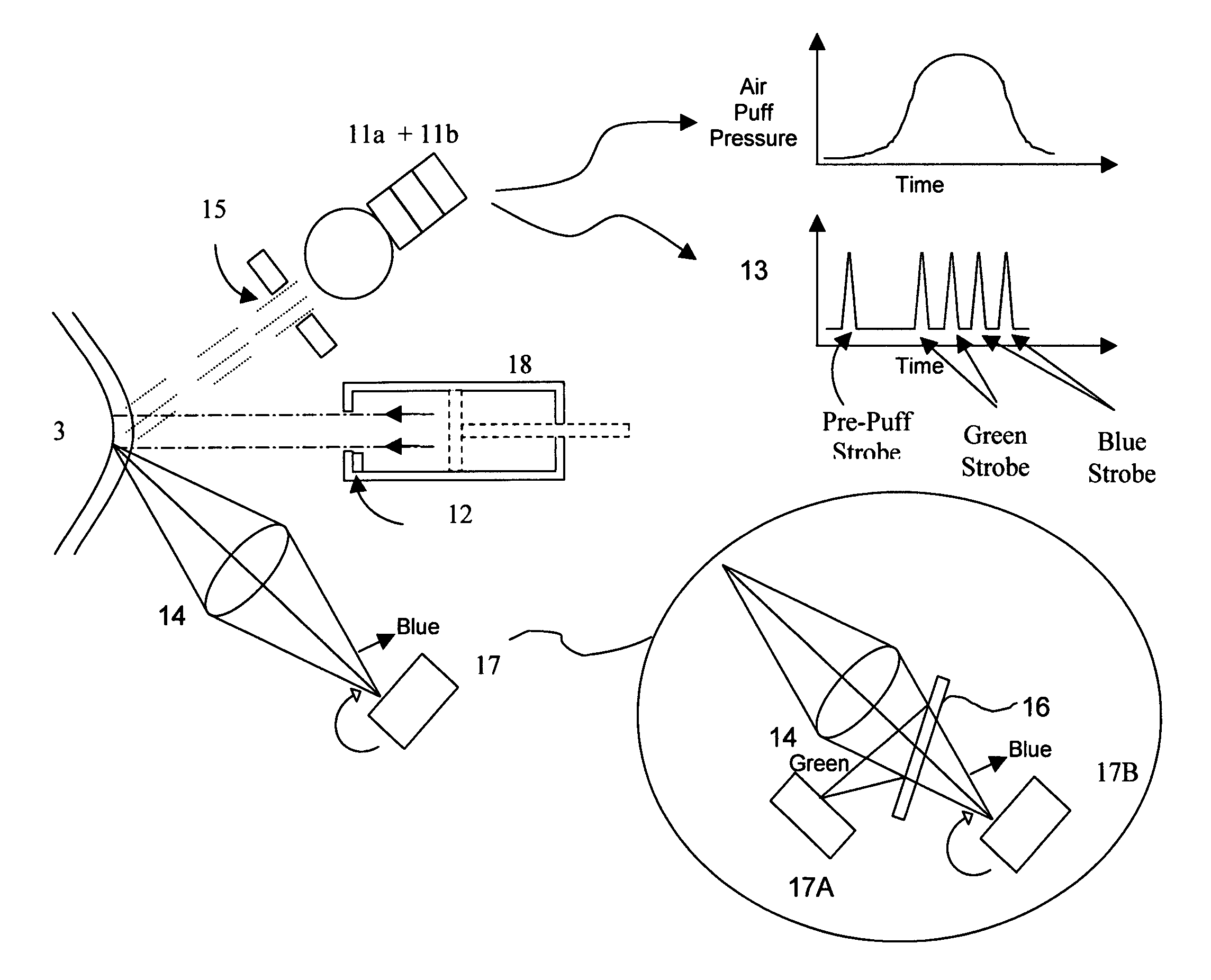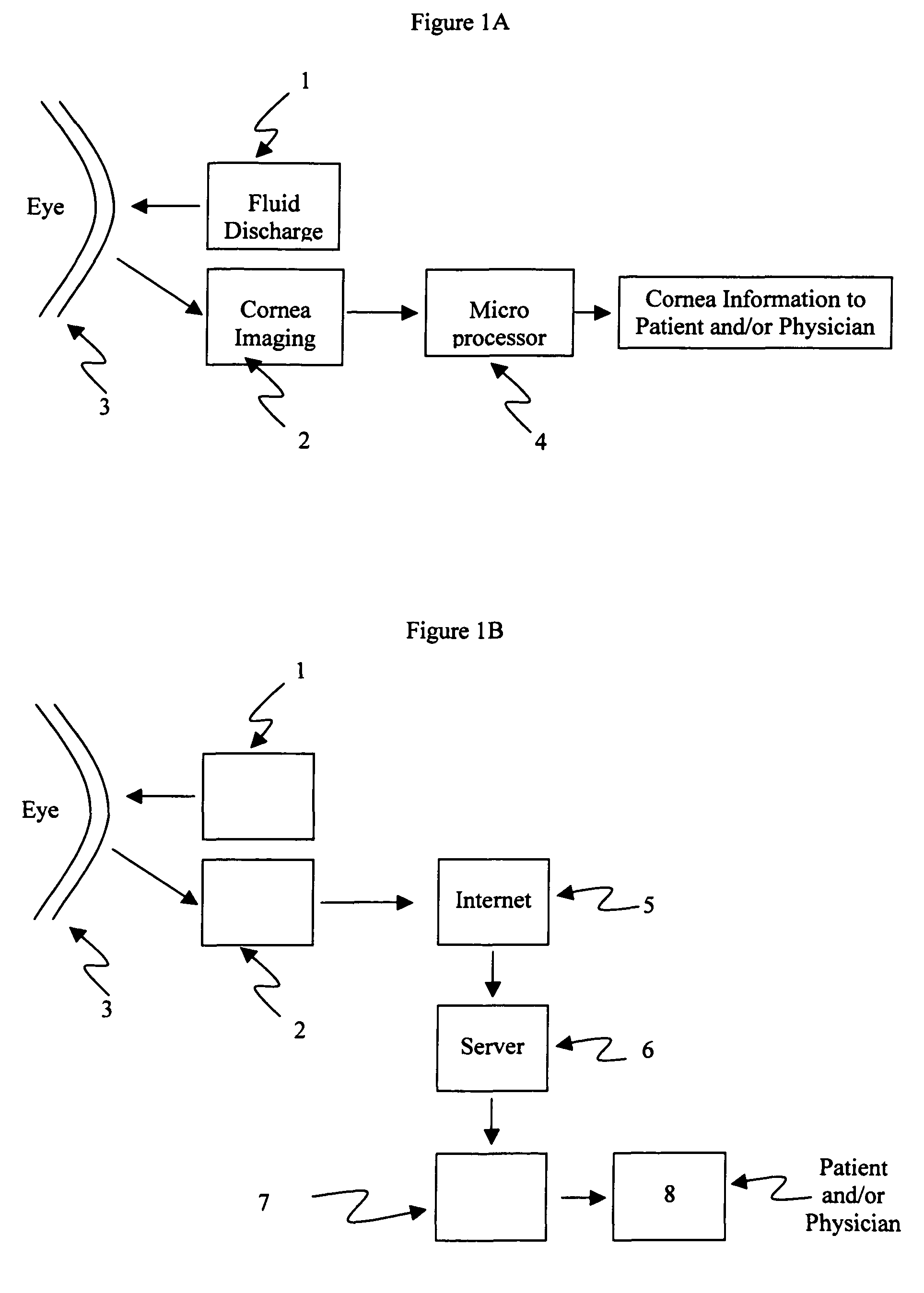Device and method to measure corneal biomechanical properties and its application to intraocular pressure measurement
- Summary
- Abstract
- Description
- Claims
- Application Information
AI Technical Summary
Benefits of technology
Problems solved by technology
Method used
Image
Examples
Embodiment Construction
[0033]The system for use in the invention, as indicated in FIG. 1, has a fluid discharge device, 1, that discharges a pulse of the fluid with known stress profile and an image recording subsystem, 2, that records the profile of the cornea, 3, before, during and / or after the discharge of the fluid.
[0034]The cornea profiles obtained will then be used to derive the cornea parameters, e.g. the thickness, the radius of curvature, and biomechanical properties of cornea like stress-strain relationship etc., and calculate the intraocular pressure according the analytical formula and / or numerical simulations, e.g. finite element method, as describe in FIG. 1.
[0035]The fluid discharge device, 1, can be a generator that discharges air pulses. Our preferred embodiment is an enclosure with an orifice and a plunger, 18, of FIG. 2, driven by a solenoid or a linear motor, not shown in the drawing's. The plunger will drive the air through the orifice to create the impacting stress. The stress profil...
PUM
 Login to View More
Login to View More Abstract
Description
Claims
Application Information
 Login to View More
Login to View More - R&D
- Intellectual Property
- Life Sciences
- Materials
- Tech Scout
- Unparalleled Data Quality
- Higher Quality Content
- 60% Fewer Hallucinations
Browse by: Latest US Patents, China's latest patents, Technical Efficacy Thesaurus, Application Domain, Technology Topic, Popular Technical Reports.
© 2025 PatSnap. All rights reserved.Legal|Privacy policy|Modern Slavery Act Transparency Statement|Sitemap|About US| Contact US: help@patsnap.com



